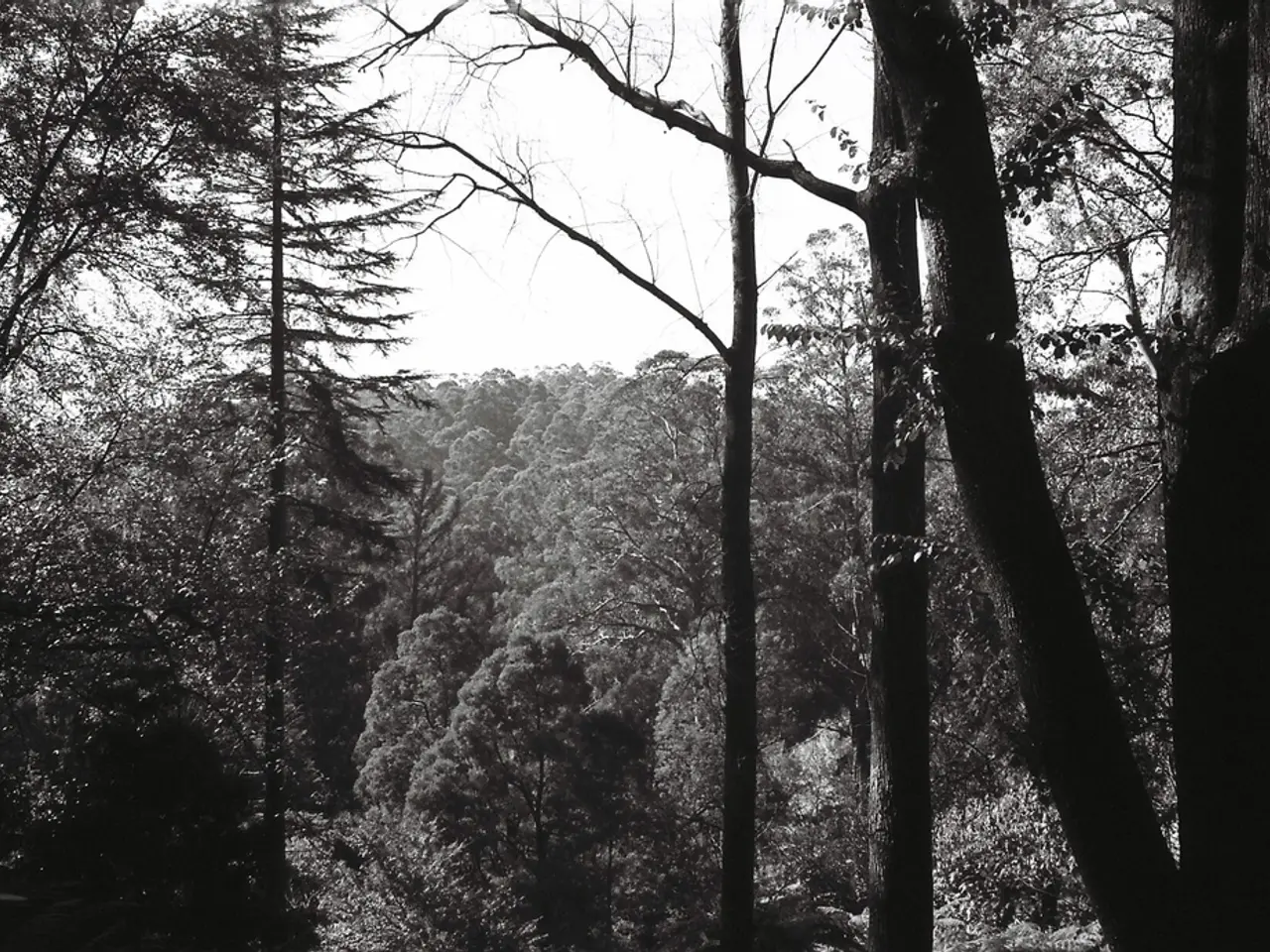Bid adieu to Los Angeles' iconic palm trees soon
In the heart of California, Los Angeles is taking strides towards a greener future. The city's urban landscape, once dominated by palm trees, is undergoing a transformation as it prepares to replace its aging trees with a new generation of native, drought-tolerant species.
The journey began with the arrival of palm trees, which came to Los Angeles with the missionaries and later as part of the "American Mediterranean" PR sales pitch. However, climate change and water scarcity have prompted a reconsideration of these water-guzzling trees, as they consume a lot of water with little ecological benefit.
Thousands of trees in Los Angeles have burned or are affected by disease, drought, and age. This has led to a call for cities to expand their urban tree canopy to mitigate the effects of climate change. The focus is on native, drought-tolerant species that not only provide shade but also support local wildlife and reduce water usage.
Recommended trees for this purpose include native oaks, sycamores (specific native varieties), black walnut trees, desert willows, drought-tolerant African sumac, Chinese pistache, and even the non-native but valued jacaranda. These selections are favoured for their climate adaptability, ability to thrive with less irrigation, enhancement of urban biodiversity, and shading capacity that helps cool city temperatures.
Oaks and sycamores, while common, are reliable natives beneficial for wildlife. Desert willows and black walnuts offer drought resilience, while jacarandas, though not native, provide fast-growing shade and pollinator benefits but may have some maintenance considerations due to sticky petals.
Ficus trees, while praised for their air pollution scrubbing abilities and shade provision, can damage sidewalks and require costly maintenance, making them less ideal despite their utility. Urban forestry efforts in Los Angeles increasingly emphasize scientific, nature-based solutions and sustainable policy support to expand the presence of climate-resilient trees in public spaces and communities while addressing heat mitigation and wildfire resilience.
Water conservation is critical, so species chosen are recommended for their lower irrigation needs compared to traditional, water-intensive plantings common in past urban forestry. They also provide habitat and food resources, supporting local ecosystems and improving urban biodiversity.
The nonprofit TreePeople has been at the forefront of preparing Los Angeles for this change, advocating for the replacement of palm trees with more beneficial trees. Los Angeles has become a tree zoo over the years, with many non-native species. However, the city is now considering replacing its geriatric urban forest with more and better trees, aiming to create a more sustainable and resilient urban landscape.
The fallen petals of jacaranda trees may be sticky, but they are considered a small toll for their beauty. Jacaranda trees are being suggested as a potential new arboreal star due to their fast growth, drought tolerance, soil forgiveness, and attractiveness to bees and butterflies. Even the original Los Angeles was not a forest primeval but a landscape of scrubby shrubs and chaparral. Today, the city is striving to return to its roots, one tree at a time.
[1] TreePeople: Reimagining LA’s Urban Forest [2] LA Times: LA's urban forest is dying. Here's what to do about it [3] UCLA: Climate-Resilient Urban Forestry in Los Angeles [4] TreePeople: Urban Forestry [5] LA Department of Water and Power: Urban Forestry
- Recognizing the impact of drought and water scarcity, Los Angeles is transitioning its urban landscape, initially dominated by palm trees, to a greener future with drought-tolerant native trees.
- Due to their high water consumption and minimal ecological benefit, traditional water-guzzling palm trees are being reconsidered in Los Angeles, prompting a shift towards more climate-friendly species.
- As thousands of trees in Los Angeles are either burned, diseased, or aged, there's a growing call for cities to expand their urban canopy with drought-tolerant trees to combat climate change effects.
- Emphasis is placed on native trees like oak and sycamore for their wildlife benefits, as well as non-native but valuable trees such as jacaranda for their drought resistance, fast growth, and shade provision.
- California's environmental laws, policies, and organizations, like TreePeople and the LA Department of Water and Power, are key components in LA's push for climate-resilient urban forestry.
- Scientifically-backed, nature-based solutions seek to replace Los Angeles' geriatric urban forest with climate-resilient trees to mitigate heat mitigation, wildfire resilience, and support local ecosystems.
- Water conservation is integral to the new urban forestry plans, with species chosen for their lower irrigation needs compared to the water-intensive plantings of the past.
- Amidst calls for a greener LA, the fallen sticky petals of jacaranda trees represent a small price to pay for their drought tolerance, attractiveness to pollinators, and potential role as the new arboreal star in the city's ongoing transformation.




